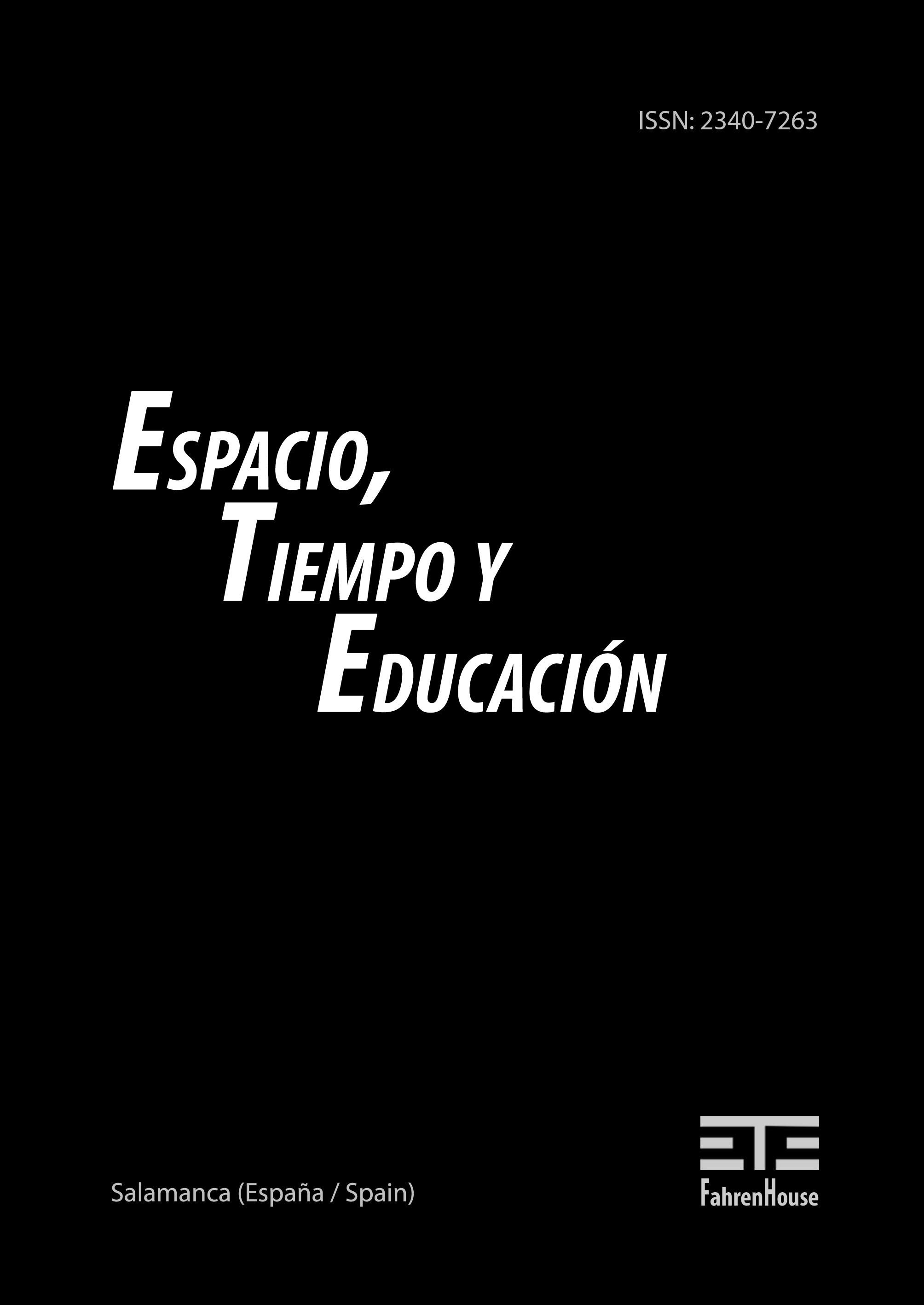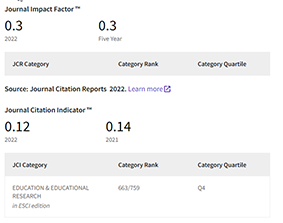Building Convivial Educational Tools in the 21st Century: a Proposal based on the Ideas of Freire and Illich
DOI:
https://doi.org/10.14516/ete.492Keywords:
Design, Educational Technology, Inclusive Education, Educational SoftwareAbstract
Ivan Illich famously coined the term «tools for conviviality» in which he refers to tools that encourage individual creativity and expression, and that can be adapted to people’s needs and situations. This paper describes the design of an interactive adaptable tool, whose applications include education and game play, and contextualizes it within Illich’s framework. The Collaborative Interactive Tabletop for Education (CITE), currently being developed at SUNY Polytechnic, allows users to manipulate digital information through the manipulation of hand-held tabletop objects. Such interfaces, known as Tangible User Interfaces (TUI), are believed to have significant advantages over traditional screen-based interfaces. For example, they have been shown to measurably increase collaborative behavior among users. However, TUIs have not been widely adopted, perhaps because most current TUI designs require some kind of specialized hardware. Our approach is to instead create a system, a set of verified instructions along with open-license software packages, for adapting any combination of standard computer hardware into a highly customizable interactive tabletop.
References
Blasco-Arcas, L., Buil, I., Hernández-Ortega, B., & Sese, F. J. (2013). Using clickers in class. The role of interactivity, active collaborative learning and engagement in learning performance. Computers & Education, 62, 102-110. doi: https://doi.org/10.1016/j.compedu.2012.10.019
Boyd, D. (2016). What Would Paulo Freire Think of Blackboard (TM): Critical Pedagogy in an Age of Online Learning. International Journal of Critical Pedagogy, 7(1), 166-186.
Braille Authority of North America. (2010). Guidelines and Standards for Tactile Graphics. http://brailleauthority.org/tg/web-manual/
Bruno Jofre, R., & Igelmo Zaldivar, J. (2012). Ivan Illich’s Late Critique of «Deschooling Society»: «I Was Largely Barking Up the Wrong Tree». Educational Theory, 62(5), 573-592.
Chandrasekera, T., & Yoon, S.-Y. (2015). The Effect of Tangible User Interfaces on Cognitive Load in the Creative Design Process. 2015 IEEE International Symposium on Mixed and Augmented Reality - Media, Art, Social Science, Humanities and Design, 6–8. doi: https://doi.org/10.1109/ISMAR-MASHD.2015.18
Chibaudel, Q., Johal, W., Oriola, B., Macé, M. J.-M., Dillenbourg, P., Tartas, V., & Jouffrais, C. (2020). «If you’ve gone straight, now, you must turn left». Exploring the use of a tangible interface in a collaborative treasure hunt for people with visual impairments. ASSETS’20. doi: https://doi.org/10.1145/3373625.3417020
Counsell, C., Arthur, ed. J., & Phillips, ed. R. (2009). Historical Knowledge and Historical Skills: A Distracting Dichotomy. In Issues in History Teaching (pp. 54-71). RoutledgeFalmer.
De Raffaele, C., Smith, S., & Gemikonakli, O. (2018). An Active Tangible User Interface Framework for Teaching and Learning Artificial Intelligence. 23rd International Conference on Intelligent User Interfaces, 535–546. https://doi.org/10.1145/3172944.3172976
Feenberg, A. (2002). Transforming Technology: A Critical Theory Revisited (Revised edition). Oxford University Press. https://www.sfu.ca/~andrewf/Trans%20Tech%20Chapt%206.pdf
Follmer, S., Leithinger, D., Olwal, A., Hogge, A., & Ishii, H. (2013). inFORM: Dynamic Physical Affordances and Constraints Through Shape and Object Actuation. Proceedings of the 26th Annual ACM Symposium on User Interface Software and Technology, 417-426. doi: https://doi.org/10.1145/2501988.2502032
Gee, J. P. (2007). What Video Games Have to Teach Us About Learning and Literacy (2nd Ed.). Palgrave Macmillan.
Glassman, M. (2018). DeMOOCing Society: Convivial Tools to Systems and Back Again in the Information Age. Educational Philosophy and Theory, 51(14), 1413-1422. doi: https://doi.org/10.1080/00131857.2018.1539827
Henry, S. L. (2018, February 27). Essential Components of Web Accessibility. Web Accessibility Initiative. https://www.w3.org/WAI/fundamentals/components/
Holmes, K. (2018). Mismatch: How Inclusion Shapes Design. The MIT Press.
Illich, I. (2001). Tools for Conviviality. Marion Boyars.
Jofre, A., Szigeti, S., Keller, S. T., Dong, L.-X., Czarnowski, D., Tomé, F., & Diamond, S. (2015). A Tangible User Interface for Interactive Data Visualization. Proceedings of the 25th Annual International Conference on Computer Science and Software Engineering, 244-247. http://dl.acm.org/citation.cfm?id=2886444.2886484
Jofre, A., Szigeti, S., Tiefenbach-Keller, S., Dong, L.-X., & Diamond, S. (2016). Manipulating Tabletop Objects to Interactively Query a Database. Proceedings of the 2016 CHI Conference Extended Abstracts on Human Factors in Computing Systems, 3695-3698. doi: https://doi.org/10.1145/2851581.2890260
Kahn, R., & Kellner, D. (2007). Paulo Freire and Ivan Illich: Technology, Politics, and the Reconstruction of Education. Policy Futures in Education, 5(4), 431-448. doi: https://doi.org/10.2304/pfie/2007.5.4.431
Kaltenbrunner, M., & Bencina, R. (2007). reacTIVision: A Computer-vision Framework for Table-based Tangible Interaction. Proceedings of the 1st International Conference on Tangible and Embedded Interaction, 69-74. https://doi.org/10.1145/1226969.1226983
Kaltenbrunner, M., Bovermann, T., Bencina, R., & Costanza, E. (2005). TUIO: A protocol for table-top tangible user interfaces. Proc. of the The 6th Int’l Workshop on Gesture in Human-Computer Interaction and Simulation, 1-5. https://www.researchgate.net/profile/Martin_Kaltenbrunner/publication/225075863_TUIO_A_Protocol_for_Table-Top_Tangible_User_Interfaces/links/55adfa4708ae98e661a4510d.pdf
Kell, H. J., Lubinski, D., Benbow, C. P., & Steiger, J. H. (2013). Creativity and Technical Innovation: Spatial Ability’s Unique Role. Psychological Science, 24(9), 1831-1836. https://www.jstor.org/stable/23484685
Keller, K. H. (2012a). Gapminder: An AP Human Geography Lab Assignment. The Geography Teacher, 9(2), 60-63. doi: https://doi.org/10.1080/19338341.2012.679893
Keller, K. H. (2012b). Gapminder: An AP Human Geography Lab Assignment. The Geography Teacher, 9(2), 60-63. doi: https://doi.org/10.1080/19338341.2012.679893
Kim, M. J., & Maher, M. L. (2008). The impact of tangible user interfaces on spatial cognition during collaborative design. Design Studies, 29(3), 222-253. doi: https://doi.org/10.1016/j.destud.2007.12.006
Klum, S., Isenberg, P., Langner, R., Fekete, J.-D., & Dachselt, R. (2012). Stackables: Combining Tangibles for Faceted Browsing. Proceedings of the International Working Conference on Advanced Visual Interfaces, 241-248. doi: https://doi.org/10.1145/2254556.2254600
Konkel, M. K., Ullmer, B., Shaer, O., & Mazalek, A. (2019). Envisioning tangibles and display-rich interfaces for co-located and distributed genomics collaborations. Proceedings of the 8th ACM International Symposium on Pervasive Displays, 1-8. doi: https://doi.org/10.1145/3321335.3324953
Lakin, J., & Wai, J. (2020). Spatially gifted, academically inconvenienced: Spatially talented students experience less academic engagement and more behavioural issues than other talented students. British Journal of Educational Psychology, 90(4), 1015-1038. doi: https://doi.org/10.1111/bjep.12343
Langner, R., Augsburg, A., & Dachselt, R. (2014). CubeQuery: Tangible Interface for Creating and Manipulating Database Queries. Proceedings of the Ninth ACM International Conference on Interactive Tabletops and Surfaces, 423-426. doi: https://doi.org/10.1145/2669485.2669526
Le, D.-T. (2013). Bringing Data to Life into an Introductory Statistics Course with Gapminder. Teaching Statistics, 35(3), 114-122. doi: https://doi.org/10.1111/test.12015
Marshall, P. (2007). Do Tangible Interfaces Enhance Learning? Proceedings of the 1st International Conference on Tangible and Embedded Interaction, 163-170. doi: https://doi.org/10.1145/1226969.1227004
Mehta, M., Arif, A. S., Gupta, A., DeLong, S., Manshaei, R., Williams, G., Lalwani, M., Chandrasekharan, S., & Mazalek, A. (2016). Active Pathways: Using Active Tangibles and Interactive Tabletops for Collaborative Modeling in Systems Biology. Proceedings of the 2016 ACM International Conference on Interactive Surfaces and Spaces, 129-138. doi: https://doi.org/10.1145/2992154.2992176
Melcer, E. F., Hollis, V., & Isbister, K. (2017). Tangibles vs. Mouse in Educational Programming Games: Influences on Enjoyment and Self-Beliefs. Proceedings of the 2017 CHI Conference Extended Abstracts on Human Factors in Computing Systems, 1901-1908. doi: https://doi.org/10.1145/3027063.3053115
Schneider, B., Jermann, P., Zufferey, G., & Dillenbourg, P. (2011). Benefits of a Tangible Interface for Collaborative Learning and Interaction. http://ieeexplore.ieee.org/stamp/stamp.jsp?arnumber=5654494
Schneider, B., Sharma, K., Cuendet, S., Zufferey, G., Dillenbourg, P., & Pea, A. D. (2015). 3D tangibles facilitate joint visual attention in dyads. International Conference on Computer Supported Collaborative Learning (CSCL), 158-165. http://blog.bertrandschneider.com/wp-content/uploads/2012/01/9.MC-0182-paper-edit1-LD.pdf
Schneider, B., Sharma, K., Cuendet, S., Zufferey, G., Dillenbourg, P., & Pea, R. (2016). Using Mobile Eye-Trackers to Unpack the Perceptual Benefits of a Tangible User Interface for Collaborative Learning. ACM Transactions on Computer-Human Interaction, 23(6), 39:1-39:23. doi: https://doi.org/10.1145/3012009
Shaer, O., & Hornecker, E. (2010). Tangible User Interfaces: Past, Present, and Future Directions. Found. Trends Hum.-Comput. Interact., 3(1-2), 1-137. doi: https://doi.org/10.1561/1100000026
Skulmowski, A., Pradel, S., Kuehnert, T., Brunnett, G., & Rey, G. D. (2016). Embodied learning using a tangible user interface: The effects of haptic perception and selective pointing on a spatial learning task. Computers & Education, 92-93, 64-75. doi: https://doi.org/10.1016/j.compedu.2015.10.011
Tognoli, N., & Chavez Gumaraes, J. A. (2019). Provenance as a Knowledge Organization Principle. Knowledge Organization, 46(7), 558-568. doi: https://doi.org/DOI:10.5771/0943-7444-2019-7-558
Urrutia, F. Z., Loyola, C. C., & Marín, M. H. (2019). A Tangible User Interface to Facilitate Learning of Trigonometry. International Journal of Emerging Technologies in Learning (IJET), 14(23), 152-164. doi: https://www.learntechlib.org/p/217244/
Wai, J., Lubinski, D., & Benbow, C. P. (2009). Spatial Ability for STEM Domains: Aligning Over 50 Years of Cumulative Psychological Knowledge Solidifies Its Importance. Journal of Educational Psychology, 101(4), 817-835. doi: https://doi.org/10.1037/a0016127
Wetteman, R., & White, T. (2019). The Internet is Unavailable (Research Note No. T103; pp. 1-5). Nucleus Research. https://accessibility.deque.com/nucleus-accessibility-research-2019
Xie, L., Antle, A. N., & Motamedi, N. (2008). Are Tangibles More Fun?: Comparing Children’s Enjoyment and Engagement Using Physical, Graphical and Tangible User Interfaces. Proceedings of the 2Nd International Conference on Tangible and Embedded Interaction, 191-198. doi: https://doi.org/10.1145/1347390.1347433







